Top Smart Home Risks: Cyber Attacks and Personal Privacy

Smart homes offer convenience and automation, but they also introduce significant risks related to cybersecurity and personal privacy. Below are the most critical risks, supported by recent research and expert analysis.

Cyber Attack Risks
- Device Hijacking and Unauthorized Access
Many smart home devices lack robust security, making them easy targets for hackers. Attackers can take control of devices—such as cameras, thermostats, or smart locks—potentially gaining access to the entire home network through a single vulnerable device137. Device hijacking can be hard to detect, as compromised devices may continue to function normally while under attacker control3. - Network Vulnerabilities
Unsecured home networks are a common entry point for attackers. If a hacker breaches the network, they can access not only smart devices but also sensitive personal data (emails, bank accounts) stored on other connected devices17. Vulnerabilities in routers and smart hubs can expose all connected devices, regardless of their individual security35. - Denial-of-Service (DoS) and Botnet Attacks
Smart home devices are frequently targeted for DoS attacks, which can shut down devices or networks by overwhelming them with traffic. Many incidents involve botnets, where compromised devices are used collectively to launch large-scale attacks5. - Man-in-the-Middle and Data Interception
Weak or absent encryption allows attackers to intercept data transmitted between devices, apps, and the cloud. This can lead to data theft, manipulation, or unauthorized device control37. - Outdated Firmware and Default Passwords
Many devices ship with default credentials or lack regular security updates, making them especially vulnerable to known exploits57.
Personal Privacy Risks
- Extensive Data Collection and Profiling
Smart home devices and their companion apps often collect vast amounts of personal data, including precise location, audio/video recordings, usage patterns, and even health information. Major platforms like Amazon Alexa and Google Home are particularly data-hungry, gathering dozens of data points per user627. - Data Sharing with Third Parties
Some manufacturers share user data with third parties for advertising, analytics, or service improvement, sometimes without explicit user consent. This can result in unsolicited marketing or data being used in ways users cannot control26. - Remote Surveillance and Eavesdropping
Devices with microphones and cameras (e.g., baby monitors, security cameras) are at risk of being hacked, enabling attackers to spy on residents, record private conversations, or even communicate with household members137. - Exposure of Sensitive Information
Research shows that many IoT devices inadvertently leak personally identifiable information (PII), such as device names, unique hardware addresses, and even geolocation, through standard network protocols. This data can be harvested by companies or malicious actors for surveillance or profiling48. - Lack of User Control and Transparency
Users often have limited visibility into what data is collected, how it is used, and with whom it is shared. Insufficient privacy settings or unclear privacy policies further exacerbate this risk267.

Most Vulnerable Devices
| Device Type | Common Vulnerabilities | Risks |
|---|---|---|
| Smart TVs | Outdated software, weak security | Data leaks, DoS attacks, unauthorized access5 |
| Smart Plugs | Poor authentication, firmware flaws | Network entry point, botnet recruitment5 |
| IP Cameras | Weak passwords, lack of encryption | Surveillance, privacy invasion135 |
| Routers/Hubs | Default settings, unpatched flaws | Full network compromise53 |
| Voice Assistants | Data collection, voice spoofing | Eavesdropping, profiling67 |
Key Takeaways
- Smart home devices are frequent targets for cyber attacks due to weak security, outdated software, and inconsistent manufacturer standards.
- Personal privacy is at risk from extensive data collection, sharing with third parties, and potential surveillance through compromised devices.
- The most vulnerable devices include smart TVs, plugs, cameras, and routers, but any device can serve as an entry point if not properly secured.
- Users should prioritize strong passwords, regular updates, network segmentation, and careful review of privacy settings to mitigate these risks123567.
Smart homes enhance daily life, but vigilance and proactive security measures are essential to protect both digital and physical privacy.

How to Secure Your Smart Home Devices from Cyber Attacks
Securing your smart home devices is essential to protect your privacy and prevent cyber intrusions. Follow these expert-backed steps to minimize your risk:
1. Secure Your Wi-Fi Network
- Use a strong, unique password for your Wi-Fi and enable WPA2 or WPA3 encryption. This prevents unauthorized users from accessing your network and, by extension, your smart devices157.
- Change the default network name (SSID) and disable SSID broadcasting to make your network less visible to outsiders5.
- Consider setting up a separate network or guest network for your smart home devices, isolating them from computers and smartphones with sensitive data17.
2. Use Strong, Unique Passwords
- Assign strong, unique passwords to each smart device and its associated app accounts. Avoid reusing passwords across devices or services127.
- Change default passwords immediately after setup, as these are often known to hackers459.
3. Enable Two-Factor or Multi-Factor Authentication (2FA/MFA)
- Activate 2FA or MFA on device accounts and apps whenever possible. This adds a critical layer of security, requiring a second verification step beyond just a password167.
4. Keep Devices and Software Updated
- Regularly update the firmware and software for all smart home devices and their apps. Updates often patch security vulnerabilities that hackers exploit12467.
- Enable automatic updates if available, or set reminders to check for updates manually.
5. Review and Limit App Permissions
- Only grant apps the permissions they absolutely need. Deny or revoke access to unnecessary features like microphones, cameras, or location data1246.
- Regularly audit which third-party services have access to your devices and remove those you no longer use6.
6. Disable Unnecessary Features
- Turn off features you don’t use, such as remote access, voice assistants, or cameras, especially when you’re not home28.
- Physically cover cameras and mute microphones when not in use to prevent eavesdropping2.
7. Monitor Your Network and Devices
- Use network monitoring tools to keep track of connected devices and detect unfamiliar activity17.
- Regularly review device activity logs for signs of unauthorized access or suspicious behavior6.
8. Secure Your Router
- Change default router passwords and use strong, unique credentials for administrator access57.
- Disable remote management and unnecessary services like UPnP or SNMP, which can be exploited by attackers5.
- Reboot your router periodically to clear any potential malware5.
9. Choose Reputable Brands and Certified Devices
- Purchase smart home devices from reputable manufacturers that provide regular security updates and support39.
- Look for devices with security certifications and features like secure boot, encrypted storage, and secure firmware updates9.
10. Be Mindful of What You Connect
- Only add devices you truly need. Each new device increases your attack surface and potential vulnerabilities178.
- Before purchasing, research the device’s security features and history of vulnerabilities8.
By implementing these measures, you can significantly reduce the risk of cyber attacks on your smart home and protect your personal privacy. Remember, smart home security is an ongoing process—stay informed and regularly review your setup for new threats and updates178.
Citations:
- https://www.kaspersky.com/resource-center/preemptive-safety/smart-home-security
- https://www.citynet.net/protecting-your-personal-information-on-your-smart-tv/
- https://evvr.io/blogs/newsroom-2/smart-plugs-and-home-security-keeping-your-home-safe-and-secure
- https://teledata.us.com/general/securing-your-space-a-guide-to-ip-security-camera-systems/
- https://www.cyber.gc.ca/en/guidance/routers-cyber-security-best-practices-itsap80019
- https://www.siberoloji.com/securing-voice-assistants-privacy-concerns-and-best-practices/
- https://www.pcmag.com/how-to/protect-your-smart-home-from-hackers
- https://www.travelers.com/resources/home/smart-home/how-to-help-protect-your-smart-home-from-hackers
- https://iotsecurityfoundation.org/how-to-protect-connected-home-devices-and-appliances-from-cyber-attacks/
- https://pbigaem.fs.ml.com/articles/internet-of-things-iot-device-security-your-home.html
- https://www.fortinet.com/resources/cyberglossary/iot-best-practices
- https://www.cisa.gov/topics/cybersecurity-best-practices
- https://www.wsj.com/tech/cybersecurity/smart-home-cyber-security-threats-protection-f35cfa82
- https://blackcloak.io/protecting-your-smart-tv-from-hackers/
- https://usa.kaspersky.com/resource-center/threats/is-your-smart-tv-spying-on-you
- https://securityplanner.consumerreports.org/tool/secure-your-smart-tv
- https://www.nxp.com/company/about-nxp/smarter-world-blog/BL-PROTECTING-IP-CAMERAS
- https://www.alliedtelesis.com/us/en/foundations/how-do-network-routers-provide-security
- https://keepnetlabs.com/blog/securing-personal-voice-assistants-while-working-from-home
- https://www.bitdefender.com/en-us/blog/hotforsecurity/smart-tv-security-concerns-3-ways-to-stay-safe
- https://refugetechsafety.org/pl/guides-smart-plug/
- https://consumer.ftc.gov/articles/how-secure-your-home-security-cameras
- https://www.netgear.com/hub/network/security/secure-your-router/
- https://consumer.ftc.gov/articles/how-secure-your-voice-assistant-and-protect-your-privacy
- https://www.microsoft.com/en-us/microsoft-365-life-hacks/privacy-and-safety/smart-tv-safety
- https://www.reddit.com/r/smarthome/comments/y2g28d/how_do_you_protect_your_smart_home_devices_from/
- https://www.proofpoint.com/us/security-awareness/post/5-security-tips-smart-tvs
- https://www.pandasecurity.com/en/mediacenter/smart-tvs-and-security-risks-what-you-need-to-know/
- https://www.reddit.com/r/AskNetsec/comments/9zogn1/smart_plug_security_concerns/
- https://usa.kaspersky.com/resource-center/threats/how-safe-is-your-smart-home
- https://www.robin-data.io/en/data-protection-and-data-security-academy/news/smart-home-applications-data-protection
- https://www.originwirelessai.com/top-5-smart-home-security-risks-and-how-to-prevent-them/
- https://www.cepro.com/networking/new-research-uncovers-litany-of-privacy-security-issues-in-consumer-iot-devices/
- https://www.cepro.com/news/critical-cybersecurity-vulnerabilities-in-smart-home-devices-uncovered-in-new-research/139067/
- https://complexdiscovery.com/privacy-risks-in-smart-home-apps-a-closer-look-at-data-collection/
- https://www.canarytrap.com/blog/smart-homes-security/
- https://pmc.ncbi.nlm.nih.gov/articles/PMC8512241/
- https://www.rambus.com/iot/smart-home/
- https://engineering.nyu.edu/news/new-research-reveals-alarming-privacy-and-security-threats-smart-homes
- https://www.cnet.com/home/security/smart-device-cyberattacks-more-than-doubled-in-2024-should-you-worry/
- https://www.cepro.com/networking/securing-the-smart-home-network-the-cybersecurity-risks-of-iot/
- https://www.imsva.com/blog/2024/august/privacy-and-security-in-smart-homes-keeping-your/
- https://www.reddit.com/r/smarthome/comments/y2g28d/how_do_you_protect_your_smart_home_devices_from/
- https://www.reddit.com/r/privacy/comments/15ts50p/how_to_maximize_privacy_in_homes_with_smart/
- https://www.sentinelone.com/cybersecurity-101/data-and-ai/iot-security-risks/
- https://www.reddit.com/r/smarthome/comments/q4lpf2/ive_avoided_smart_home_stuff_because_i_value_my/
- https://www.globenewswire.com/news-release/2024/07/16/2913783/0/en/Study-reveals-smart-home-privacy-risks-with-Amazon-Alexa-the-most-hungry-for-user-data.html
- https://www.sciencedirect.com/science/article/pii/S0747563223001218
- https://blog.counselstack.com/smart-home-devices-data-privacy-security-vulnerabilities-consumer-rights/








